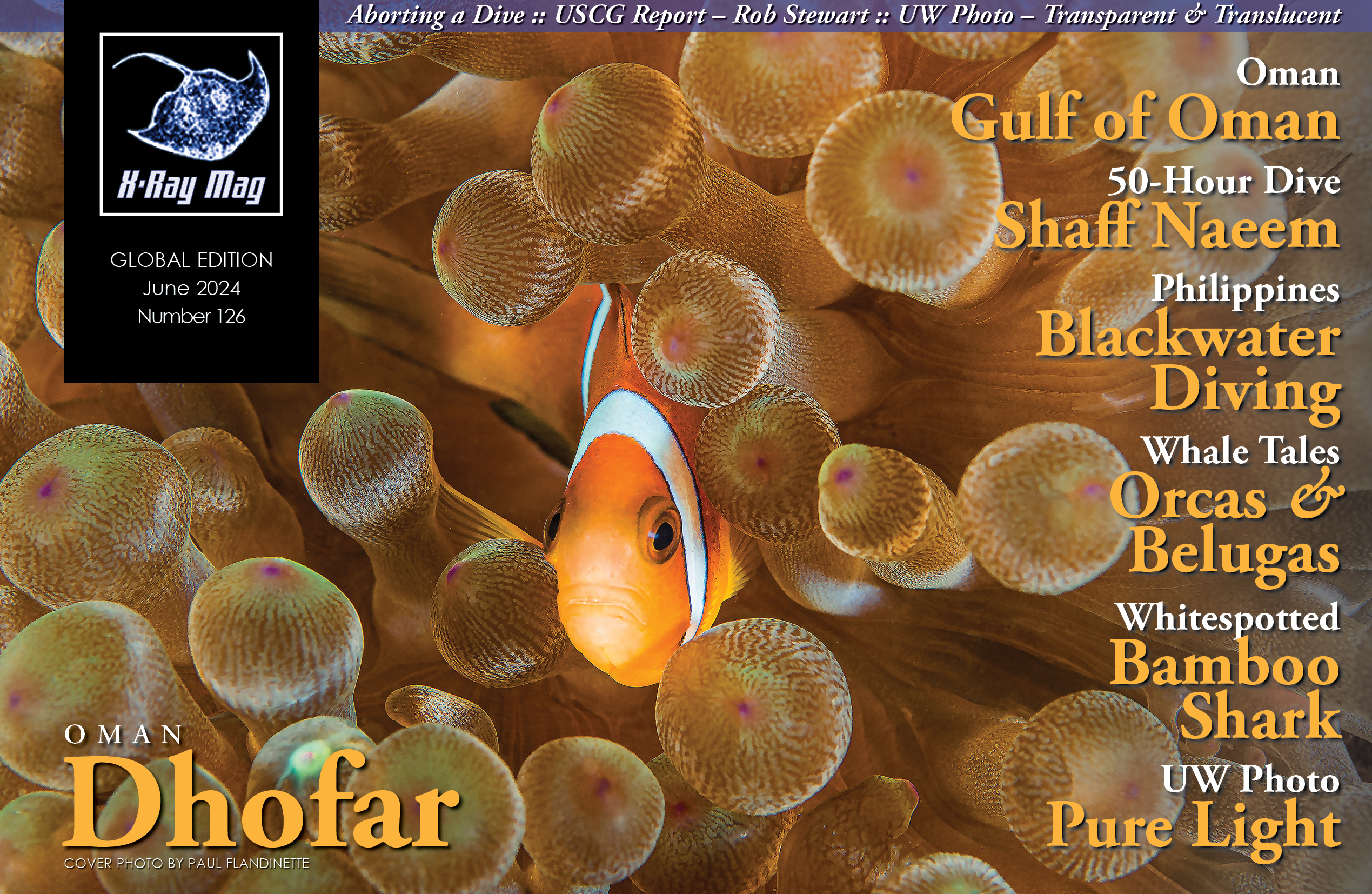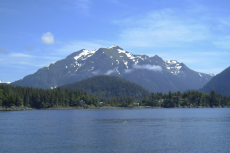The US Coast Guard report on the drowning of Canadian filmmaker and technical diver Rob Stewart in Florida was released in 2022 after five years of investigation. Journalist Robert Osborne, who wrote a book about the case, responds to the report.
Contributed by
Note: On 16 June, this article was amended to correct an error regarding the pO2 that was previously stated to be 0.07 while Robert Stewart was on his decostop. The correct number is 0.7.
It seemed a senseless death—environmentalist and filmmaker Rob Stewart drowning off the coast of the Florida Keys during a dive to retrieve a $25 anchor. A great many people were focused on trying to make sense of what had happened: his family, his friends, members of the dive community, countless lawyers and the local police. There was even a documentary film crew that spent years delving into the story. Definite answers were hard to come by.
Many hoped that an investigation launched almost immediately by the United States Coast Guard (USCG) would provide those answers. But year after year went by, and the report kept being delayed. I filed half a dozen Freedom of Information Act requests and was turned down multiple times because the report was “still in process”.
It was finally released in March of 2022—more than five years after the accident. It was released very quietly. In fact, despite my repeated contacts with the USCG, I did not receive a copy until the fall of 2023. It was with great anticipation that I began to read the report. A couple of hours later, I was staring at the document in disbelief.
It was with great anticipation that I began to read the report. A couple of hours later, I was staring at the document in disbelief.
Five years of investigation, with the full resources of the USCG and from every government and private authority remotely connected to the incident, and this was what they had accomplished? There was nothing I could see that was new in the report that could not have been completed within a few weeks of the accident.
All in all, there just seemed to be a lack of effort in getting answers to some very pressing questions. It had all the earmarks of an investigation that had just gone through the motions. When I asked attorney David Concannon, who specialises in dive accident legal matters and is representing rEVO rebreathers in the ongoing civil lawsuit over Stewart’s death, what he thought of the report, he described it as, “Feckless.”

Under-investigated elements
To really detail how much the report did not cover might be an exercise in tedium, so I thought that I would focus on what I consider to be some of the more important missing or under-investigated elements.
Certifications. For a start, the USCG made a great deal about their belief that Stewart did not have the credentials to make these kinds of deep dives—below 70m (200ft). But this is not entirely true. They did not really take into account a number of TDI technical certifications that Stewart held.
They did ask TDI about any certifications held by Stewart: “Following the subsequent diving accident on January 31, 2017, the U.S. Coast Guard contacted Mr. Brian Carney of TDI. Mr. Carney was unable to locate anyone having the certification number provided by Mr. Stewart and was unable to locate any certifications for Mr. Stewart with TDI by conducting a name search.”
But the problem with this line of inquiry is that the USCG gave TDI Stewart’s PADI certification number. This is what Stewart had put on his waiver for the dives in Florida when the accident occurred. No wonder TDI didn’t find anything. Ultimately, I provided the USCG with a copy of his TDI certification number and a list of his instructor certifications—which included multiple deep-diving courses. Why TDI said they could not find Stewart’s certification by searching for his name remains a mystery—possibly TDI’s records in the United States do not include Canada.
Once I provided the list to the USCG, I asked if it would make a difference to their conclusions. They finally acknowledged: “If the Coast Guard confirms Mr. Stewart had the requisite TDI certifications, the Coast Headquarters Office of Investigations and Casualty Analysis (CG-INV) may reopen the investigation and make the appropriate revisions to the Report of Investigation.” I am still waiting to hear back.

So, why is this detail important? Two reasons. First, the Coast Guard concluded that “diving at levels beyond certification is a contributing casual factor”. And secondly, if they missed this detail, it raises questions about what else they missed after five years of investigation.
Stewart’s video. It did not take too much searching to find another missed piece of information. The USCG Investigators had not watched the video that Stewart shot the day before the accident. This is important for a number of reasons.
First, it shows Stewart and Peter Sotis setting up their dive computers. This is critical information when trying to determine if they were diving a safe profile. Secondly, the day was virtually a mirror image of what would happen the following day when the accident occurred.
I found all kinds of critical information by watching this video, such as the fact that Stewart did not bother to inflate his wing when he surfaced. He was relying on the buoyancy of his drysuit. This could have been a huge issue when he passed out in the water. If his wing had been inflated, he might have stayed on the surface.

Tunnel vision. Another crucial piece of information is a conversation that Stewart had with Sotis and his wife, Claudia (a physician). He complained of suffering from tunnel vision during the dive. Sotis concluded that this was because he was breathing too hard on the loop and starting to hyperventilate. Maybe so, or maybe it was something else, given that Stewart acknowledged in his book, Save the Humans, “I have low blood pressure and often ride the line between being here, and fainting.” (p. 183)
So, I asked the USCG about this tunnel vision. All they had to say was, “Mr. Stewart having ‘tunnel vision’ is not a finding of fact within the Report of Investigation.” Translation: We either did not know about it or just did not bother to include it in our report.
There are several more of these glaring omissions throughout the report. But I will add one final note.
The Wilkerson deposition. When I raised a point with the USCG about something Dave Wilkerson, the skipper of the boat, said during a sworn deposition, the USCG did not seem to be aware the information existed.
My question: “During his deposition, Dave Wilkerson stated that he asked Brock Cahill to keep an eye on Stewart while he was repositioning the boat. No mention of that in the report. Why?”
USCG response: “The Coast Guard has no comment on why that statement wasn’t referenced in the report. However, Coast Guard investigators will often require more than one source to corroborate that a statement was made and heard by the intended recipient.”
This is a bit of a cop-out of an answer in my opinion. Wilkerson did not make this statement sitting in a bar with friends, he made the statement while giving a sworn deposition to a room full of lawyers. That should have carried a lot of weight—it can be introduced in court as evidence, so why the USCG did not see fit to include it raises yet more questions about the thoroughness of their work.
The “recovery team”. But all of these examples are trivial compared to the one that most dramatically affects the validity of the USCG report. The most glaring problem is the fact that they accepted the so-called “recovery team” who found Stewart’s body as some kind of legitimate group working on behalf of some local authority.
They described them as follows: “On February 3, 2017, members of the Florida Keys Water Emergency Team (WET) and additional recovery support personnel were on board the SPY PISCES, including...” Where they got that very official-sounding title remains a mystery.
The local volunteer fire department had their lawyer go public to clearly state that this group had no official standing with them. They were not officially affiliated with the USCG or the local police. So, how did they become the “Florida Keys Water Emergency Team”?
When I asked, the USCG simply said, “The investigating officer used the name the ‘recovery team’ provided.” I am not certain what that means, but it could be viewed as evasive.
Almost everyone on that “recovery” boat was in a potential conflict of interest position.
Conflict of interest. Their title was not the only issue. Almost everyone on that “recovery” boat was in a potential conflict of interest position. Dan Dawson owned the boat that lost Stewart, Craig Jenni worked for the insurance company that held Dawson’s policy, Kelly Levendorf worked for Jenni, Dave Wilkerson was the skipper on the boat that lost Stewart, and Jeff Knapp worked for the Dawson’s dive shop. Each one of these people had a vested interest in the outcome of any accident investigation and should have been nowhere near this body recovery.

That is not my opinion. It is the opinion of the medical examiner, Dr Tom Beaver, who hit the proverbial roof when he found out who was out looking for the body without any supervision.
I asked the USCG why this conflict of interest was not factored into the report, and all they had to say was: “The Coast Guard allows dive vessels to participate in the search and recovery of missing divers from their vessels. The Coast Guard coordinates and oversees these efforts.”
So, the USCG investigators completely ignored the possibility that this group might have tainted evidence.

In the documentary, The Third Dive: The Death of Rob Stewart, the producers obtained copies of radio transmissions between the boat with the alleged recovery team and the police department. At one point, when they tell the department they have the body on the boat, the captain of the vessel, Rob Bleser, stated: “We’re about a mile west of [the] Islamorada Coast Guard small boat ... and we’re going to be transferring the victim onto that boat as soon as we do some forensics.”
Forensics? Nobody on board that boat had any authority to start any forensic examination. And any “forensic” work done by them may have contaminated evidence that was critical to the medical examiner. This whole “forensic” process by a group of self-interested locals seems to have been completely ignored by the USCG investigators.
I pressed the USCG on this, and they brushed it off by saying, “The Coast Guard relied on the medical examiner’s postmortem examination report. The medical examiner’s report did not note any anomalies or potential spoilage prior to their autopsy.”
But this is a disingenuous statement. The medical examiner, Beaver, may not have put any objections in his written report, but he had strenuously objected to the fact that this so-called “recovery team” had a conflict of interest and may have contaminated any evidence. He wrote to the fire chief and expressed his misgivings. He went public and loudly objected to what had occurred. Beaver stated:

“I complained about this to everyone that would listen and … certainly the sheriff’s detectives, and the sheriff’s office was part of that. I complained to anyone that would listen, that this was, you know, that this was just outrageous.”
Interviewer: “What were their responses?”
Beaver: “Well, the sheriff said we’re not involved, it’s a Coast Guard matter ... the sheriff wasn’t willing to get involved at all in the case.”
In fact, Beaver went further. He accused the “recovery team” of shutting him out of the process, Beaver said in an interview: “I wanted to be present when they were doing it, that way I could oversee what they were doing and make sure that they weren’t destroying evidence, that there wasn’t an alteration of evidence, either intentional or accidental ... that we collected all the evidence but ... I was excluded. They intentionally excluded me from any of the ... planning for the recovery or any of the recovery operations … Once the body had been located, there was ample opportunity for them to contact me and have me come out.”
Once again, I asked the USCG why this clear conflict of interest and potential contamination of evidence had not been factored into their report. They promised to follow up with more information. So far, nothing. That was several weeks ago.
Cause of death. Finally, what makes the report of limited value is that after five years, the USCG was unable to come to any conclusion about the cause of death. Many now believe that the excessively fast surfacing protocols and aggressive decompression times led to a DCS hit of some kind—possibly one that affected the brain.
Dr Neal Pollock, research chair in hyperbaric and diving medicine at Universite Laval, suggested that such a hit was most likely; it would cause a blackout and would dissipate quickly with O2 use—the possible reason why a chamber session was not required for Sotis. If Stewart did not have his wing inflated and blacked out, he would drop the rebreather loop from his mouth, his rebreather would flood, and he would sink.
The USCG acknowledged that DCS might have been one cause, but they muddied up the report by naming several other possible causes. They also suggested that it might have been hypoxia. This is based on Beaver’s analysis. But Beaver told me in an interview that he had reconsidered that conclusion and now thought it might also be DCS.
The problem with hypoxia is that Stewart’s computer logs do not really reflect this possibility. I have a copy of the logs from his Shearwater dive computer. He did skate close to some low PP02 levels (around 0.7), but for no more than a minute or two when he first reached depth and at the end of the dive when he hit his final deco stop at 10ft. Other than that, he was good. He stayed at a pretty steady 1.1 to 1.3.
The USCG also concluded that it could possibly be oxygen toxicity. But most of the experts I spoke to said that this problem was most likely to occur at depth, not at the surface, and that it was very rare indeed. Again, Stewart’s computer showed that by the end of his third dive on that day, he was skating up around 90%.
So, five years of investigation and all the USCG could come up with was it could have been this, it could have been that. Ultimately, they blamed the aggressive dive profiles that Stewart and Sotis were diving, “The primary causal factors that led to this marine casualty include: dive planning with aggressive gradient factors; failure to input the actual diluent gas mixtures into the computer to ensure safe decompression schedules; and modifications to rebreather equipment that deviated from manufacturer’s recommendations. Additional contributing or causal factors include: diving at levels beyond certification, not adjusting dive profiles based on the dive computer, and the combination of three technical dives to depths in excess of 200 fsw over the course of a limited time span.”
At the end of the process, they slapped a few wrists about procedures for certification and checking up on waivers: “It is recommended that diving vessel marine employers require dive customers, who are passengers for hire, to present proof of diving certification to at least the level/type of diving trip or excursion being planned.” But nobody really took a serious hit in the report, particularly nobody in the dive industry in the Florida Keys.

A complex investigation
I cannot help but keep coming back to the fact that all of this information was available to them within a few months of the accident. So, why did it take them so long? Well, according to the USCG, it is complicated: “Coast Guard policy requires multiple levels of review for marine casualty investigations that involve a fatality on a commercial vessel. In this instance, the complexity of the diving fatality, combined with the high volume of investigations under review at Coast Guard Headquarters, contributed to the delayed release.” Translation: We like to take our time when the situation is complex.
And yet, for all the time they have taken, they have turned out a report that can only be described as substandard. Concannon summed it up by saying, “The investigatory techniques used were severely lacking—indeed, amateurish, incomplete and preordained. The investigators failed to follow established USCG protocols for commercial diving accident investigations, they overlooked or ignored evidence provided to them by the US Navy, they allowed themselves to be misled by subjects of the investigation, and, finally, they appeared to be covering up mistakes made by the US Coast Guard in the search and recovery of Rob Stewart’s body. That is, they allowed the primarily responsible parties (representatives of the vessel that lost Stewart and the production company that failed to follow safety protocols) to search for and recover the body while ignoring the law and established investigative protocols. The US Coast Guard has no business leading any underwater search, recovery or fatality investigation. They lack the knowledge, equipment and expertise to do so, with predictable and unsatisfactory results. This is particularly true when they start their investigation with a conclusion and only look for and at evidence to support it.” Five years of investigation, evidence missing or ignored, no real conclusion, a lot of “might have been” and “maybe was.” Stewart deserved better.
Five years of investigation, evidence missing or ignored, no real conclusion, a lot of “might have been” and “maybe was.” Stewart deserved better.






























